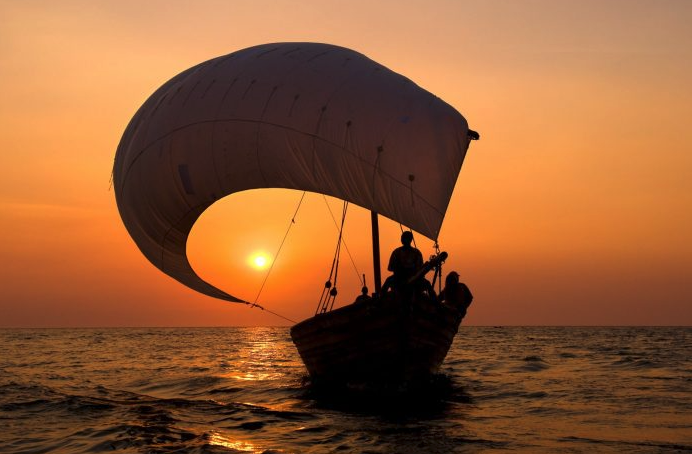
No surprise to find Australia Day attracting its annual shower of critics. January 26 is hardly a surprising target, it’s not exactly what you’d call an auspicious date.
The 1788 arrival of Britain’s First Fleet floating penitentiary on that day augured a dramatic clash of cultures, the harsh legacy of which continues today.
Of course, January 26 is not the only Australia Day we’ve recognised. At State, territory and national levels, various foundation, landing, proclamation, anniversary and Australia days have been marked as far back as 1808 – July 28, July 30, June 1, December 28, you name it.
It’s been a national day since 1946 but only a public holiday since 1994, and a wandering public holiday at that.
A more palatable date than 26 January should be easy to find. Finding agreement is a different matter, of course. A broader multicultural recognition seems fully appropriate, from both a contemporary and historical viewpoint.
Look at the Regatta Day Hobart’s had since 1838 – variously December, January or February down the years – to mark its 1642 discovery by Dutchman Abel Tasman. Tasman preceded Arthur Phillip and his motley armada and James Cook by well over a century but he was hardly the first.
Brit buccaneer William Dampier was banging around the west coast in 1699. Dutch navigator Willem Janzsoon arrived on the north coast in his Duyfken in 1606. Spaniard Luis Vaez de Torres tripped the passage to the north bearing his name just months later.
The Portuguese may have been floating about around 1521-22 if you subscribe to the late Geelong author Ken McIntyre’s Secret Discovery of Australia, harbouring in Corio Bay and losing a mahogany caravel at Warrnambool .
Likewise, China may have fronted up too, in the 1400s if you take on board controversial author Gavin Menzies’ 1421 accounts of navigator Zheng He’s discoveries.
Stories persist of ‘yellow men’ living among the Yangery tribe near Warrnambool, of an old Chinese oar embedded 15 feet in the ground under wattles at Barwon Heads, of a Chinese boat attacked by Aboriginals with the sailors killed and the boat destroyed – all long before William Buckley arrived in the early 1800s.
Historians can rattle off dozens of names from different cultures for early Australia, among them: Pangaea, Gondwana, Maletur, Beach, Lucach, Jave La Grande, Magallanica, Terra Australis Incognita, Eendrachtsland, Landt van P. Nuyts, Zuid-Landt, Hollandia Nova ….
To me, the most fascinating aspect of all this, however, is the Baghdad connection.
Erstwhile Deakin Uni academic Dr Dzavid Haveric has researched extensively the Muslim discovery of Australia.
He cites two maps backing the Muslim discovery of Australia, one by Muhamad ibn Musa al-Kwarizmi dated to 820, the other by cartographer al-Istakhari in 934.
“We have very early maps, the first from 820AD, the second from 934AD,” he says. “The first was by Al-Khwarizmi, a scientist who invented the Arabic numerals, who invented the mathematical concept of zero and Arabic algebra.
“It was the time of the Abbasid Caliphate, which had a scientific centre located in the city of Baghdad. It played a significant exploration and interaction of Muslims with different native cultures of south-eastern countries.”
Haveric is more recently an Adjunct Research Fellow at the Centre for Islamic Studies and Civilisation, and the Centre for Public and Contextual Theology at Charles Sturt University. He is also a Research Associate at Museum Victoria.
Haveric acknowledges the first mapmakers of Australia as the Aborigines, who recorded the coast, deserts and lakes in great detail in their pointillist paintings and song-lines.
Given all the above, and there are numerous more examples of early activity in the Great Southern Land, perhaps Australia’s peripatetic national day needs to assume not just a new date but a deeper recognition of just who and what this country is.
This article appeared in the Geelong Advertiser 10 January 2023.


